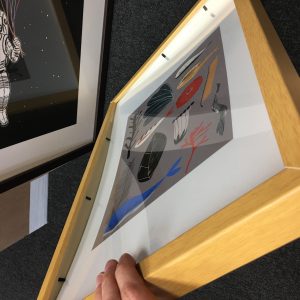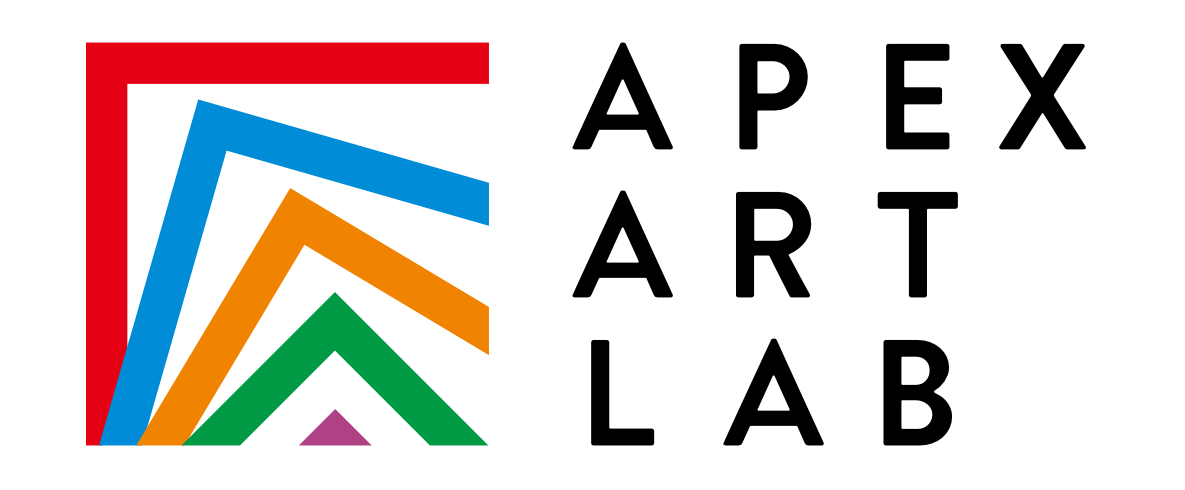
07 Oct Framing: How to Know When It’s Good
Framing: How To Know When It’s Good
*Cough* don’t buy online *cough*
Oh, how I can tell you some stories that will definitively put you off buying framed art online.
“But it’s way cheaper than going to my local art consultant or framer!”
A classic error of logic. While it may be cheap, you often pay later. Either by it coming in damaged, falling apart in under a year due to cheap materials, and all the hassle involved in actually receiving your new art (designers: you’ll want to read more about this in just a little).
Let’s start with the damages: since we work with many local Seattle interior designers on larger corporate projects and installations, we often receive artwork from online framed art vendors. I would say approximately 20% comes in damaged. The designer then has to choose to pay for reframing (and often pay rush fees) or get the vendor to resend a new piece, wasting time.
Shipping often damages the art and assembly is shoddy: with backing staples poking out from the front of art, loose frames, super cheap & thin plexi. So cheap you CAN tell from looking at it that it offers about as much protection as a piece of saran wrap. Furthermore, since artwork is often the last step of the interior design project, returns due to damages can throw a project way off its timeline.



Now let’s talk safety. We have been hanging mirrors and artwork from low-quality vendors for some now, and the screws they used to attach the hanging hardware have literally broken in half. Screws breaking in half. That’s way wrong. Quality hardware is important and a major safety issue. Don’t hang heavy things on cheap wire or d rings. You need hardware that can support the weight of the piece, and it needs to be installed in a way in which it won’t fall off the wall (duh).
Now let’s talk aesthetics and cheap art. More often than not, inexpensive framed goods bought online have zero consideration put into the actual design. We see 8×8” images printed on 11×17” paper and then straight-fit framed. Proportions are way off and it doesn’t take a designer to know that no thought was put into that piece.
What else can non-designers see in cheap art? Quality of materials. You are cruising for a bruising if you think that you can skimp on material costs and that no one will notice. Online vendors often choose a super thin, super cheap plexi glass. It looks foggy, it bows quickly, and even just a quick tap on its surface will expose its flimsiness. Your client could, as uncomfortable as it is to hear, associate this lack of quality with their designer. That’s not the look you want. Trust us, next time you have the urge to buy cheap art, contact us and we’ll show you the light. The cost is worth it when you consider the psychological returns.
Speaking of safety issues, we see more online vendors favoring acrylic as it has a higher rates of arriving undamaged. Cheap, unskilled framers might very well put glass on an oversized piece, they just don’t know better. The reason this is a big no-no is that when a piece gets large, there is a certain amount of strain placed on the glazing. Plexi is the way to go to avoid breakage and freak accidents.
Now let’s talk mounting of art. The online framers concern is to simply adhere whatever art they have to whatever backing material they have. Real framers consider the materials and customize their mounting strategy to fit it. Now if you spent five bucks on the art, who cares. But anything more special than that, it matters. Non-archival glues have acids in them that will degrade and discolor your art. And if it is real art, will decrease the work’s value.
Good archival framing is about damage prevention and longevity. Archival mounting strategies such as hinge tape (and there are several types) prevents discoloration/degradation. Acid-free backing materials (foam core, gator board, etc), AF mats, and conservation glass (several grades here) all work to make sure that time & light doesn’t have its way with your art. Keeping the glass from sitting directly on top of the artwork is key too- here’s where mats & frame spacers come in.
In short, don’t skimp on the framing if you care about your art. You might not see the consequences now, but trust me, you will.
What did you think of this article? Do you buy framed art online? What’s your experience been? We’d love to hear your experiences!
Apex Art Lab is a Seattle frame shop that offers custom framing of art & mirrors, art installation for commercial and residential properties, and art sourcing services. We love all things art & framing and even more, we love sharing!


